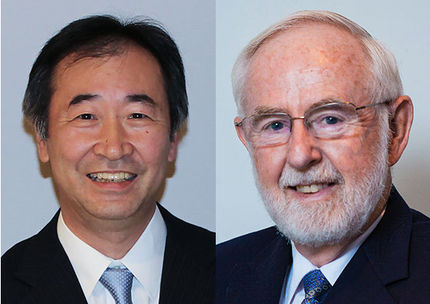Solving a long-standing atomic mass difference puzzle paves way to the neutrino mass
Advertisement
To measure the mass of neutrinos, scientists study radioactive decays in which they are emitted. An essential ingredient is the decay energy which corresponds to the mass difference between the mother and daughter nuclei. This decay energy must be known with highest precision. A team of scientists now succeeded to resolve a severe discrepancy of the decay energy for the artificial holmium (Ho) isotope with mass number 163. It decays by electron capture to the stable dysprosium-163 (163Dy) and appears well suited to measure the neutrino mass. The team prepared pure samples of 163Ho and 163Dy and directly measured their mass difference with high accuracy using a Penning-trap mass spectrometer.Neutrinos are everywhere. Hundred trillion neutrinos are traversing every human per second, but one of their fundamental properties, i.e., their mass, is still unknown. While the standard model of particle physics predicts neutrinos to be massless, observations prove that neutrinos must have a tiny mass. By studying neutrino masses, scientists thus explore physics beyond this otherwise so successful standard model. So far, only upper limits of the neutrino mass could be determined, confirming it to be tiny. This makes a direct mass measurement a challenging task, but spectroscopy of radioactive beta decay or electron capture in suitable nuclei is among the most promising approaches. All radiation emitted in the radioactive decay can be precisely measured, with the exception of the fleeting neutrino, which escapes detection. The neutrino mass is thus deduced from comparing the sum of all detectable radiation to that available for the decay.
Currently in the lead is the ECHo Collaboration, centered at the University of Heidelberg. A prior clarification concerning the various values reported for the 163Ho decay energy is mandatory. Values that span the quite large range from about 2,400 to 2,900 electron Volt (eV) have been published over the past decades from indirect measurements performed using different methods. The value recommended in data tables is on the lower end of this band, but the more recent results are some 100 eV higher than this recommended value casting doubt on its validity. In this situation, an attempt to measure the neutrino mass from the 163Ho decays is questionable.
To solve this puzzle, a team of physicists, chemists, and engineers from Germany, Russia, Switzerland, and France combined their expertise. The atomic mass difference of 163Ho and 163Dy was directly measured using the SHIPTRAP Penning-trap mass spectrometer at the GSI Helmholtz Center for Heavy Ion Research. Based on the equivalence of mass and energy the mass difference translates into the energy available for the decay. "To determine the masses of holmium and dysprosium, we measured the frequencies of their ion's circular motion in the strong magnetic field of the ion trap, using the novel phase-imaging ion-cyclotron-resonance technique, which allows measurements with highest precision", explained lead scientist Dr. Sergey Eliseev from the Max Planck Institute for Nuclear Physics. "This circular motion is projected onto a position-sensitive detector in a way that even small mass differences can be determined much faster and more precisely compared to previous methods." 163Ho and 163Dy were measured alternately in intervals of five minutes for several days.
An averaging procedure resulted in a final value of the decay energy of 2,833 eV with an uncertainty of only a few tens of eV. This confirms the recent results, settles the long-standing discrepancy, and thus provides confidence to the approach proposed by the ECHo Collaboration.
Original publication
S. Eliseev et al., "Direct Measurement of the Mass Difference of 163Ho and 163Dy Solves Q-Value Puzzle for the Neutrino Mass Determination", Physical Review Letters, 2015
Other news from the department science
Most read news
More news from our other portals
See the theme worlds for related content
Topic World Mass Spectrometry
Mass spectrometry enables us to detect and identify molecules and reveal their structure. Whether in chemistry, biochemistry or forensics - mass spectrometry opens up unexpected insights into the composition of our world. Immerse yourself in the fascinating world of mass spectrometry!

Topic World Mass Spectrometry
Mass spectrometry enables us to detect and identify molecules and reveal their structure. Whether in chemistry, biochemistry or forensics - mass spectrometry opens up unexpected insights into the composition of our world. Immerse yourself in the fascinating world of mass spectrometry!





























































